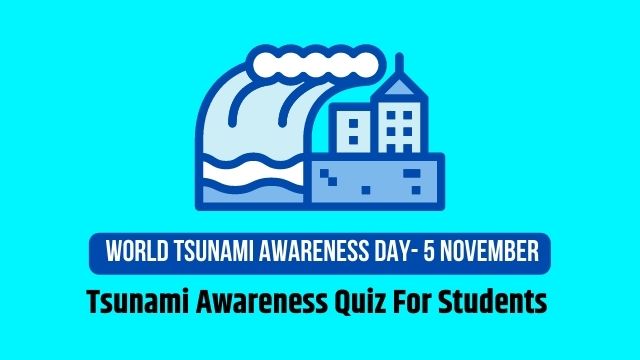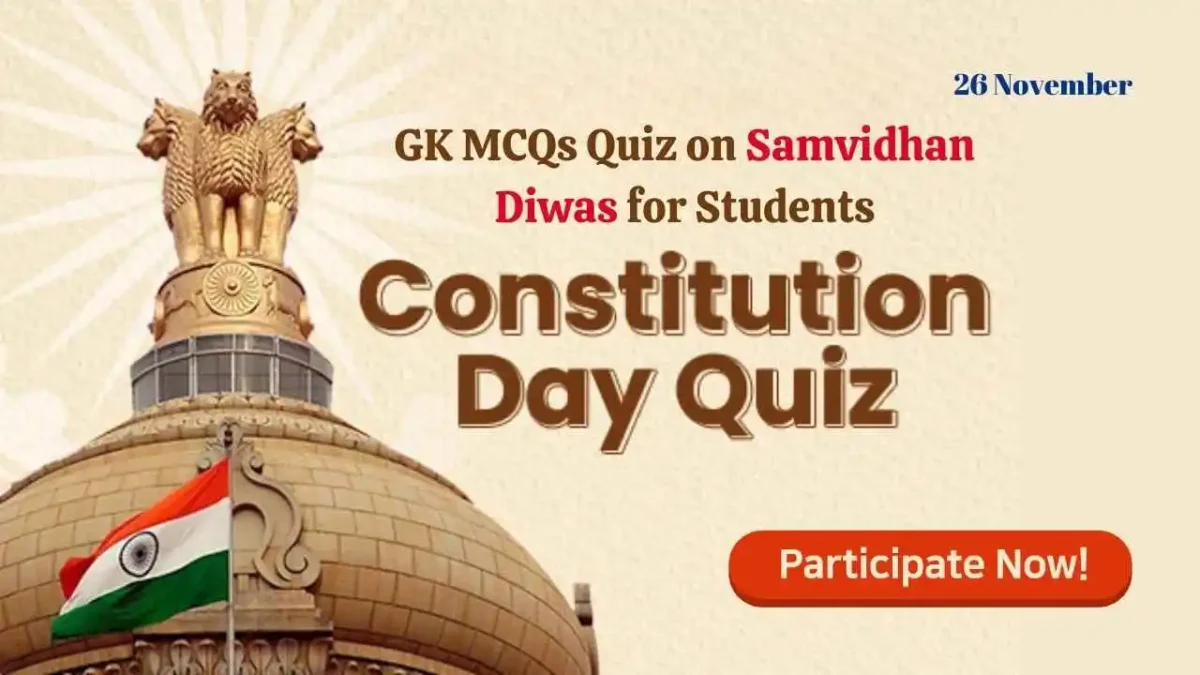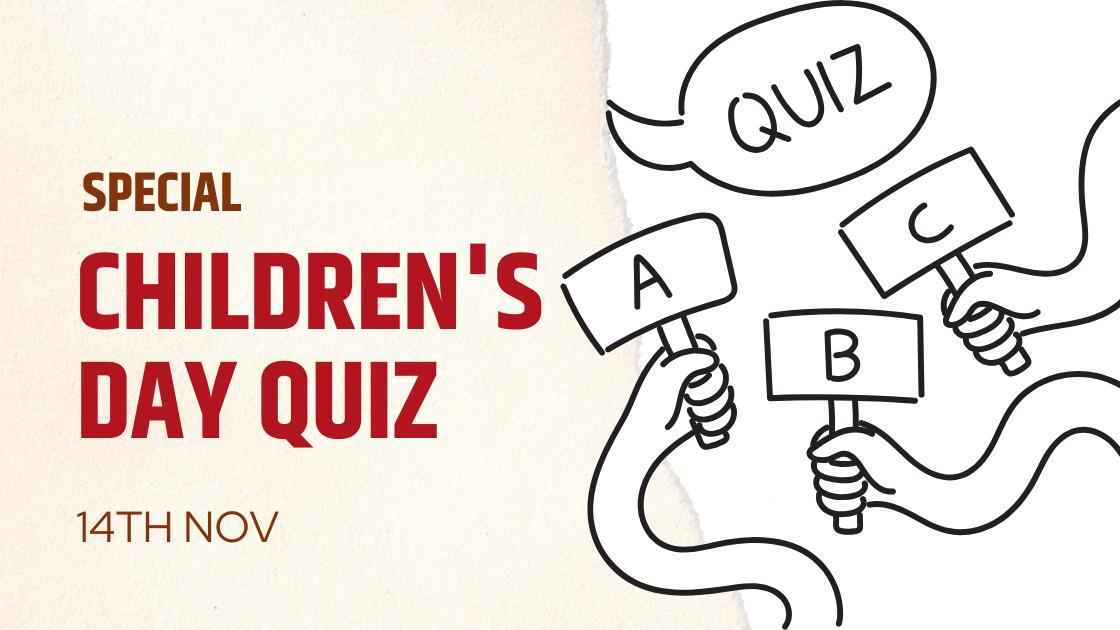Tsunami Awareness Quiz For Students
Facts About Tsunami! Trivia Questions Quiz. Test your Knowledge and you will come to know how much you know about these walls of water.
What is Tsunami?
Tsunami Awareness Day: When the earth shakes, an earthquake occurs, and when the same earthquake occurs in the ocean, it becomes a tsunami. That is, a storm that rises in the sea is called a tsunami. A sea storm is called a tsunami in Japan. In Japanese, ‘su’ means sea and ‘nami’ means waves. Japan is considered the most vulnerable to tsunamis in the world. The tsunami has wreaked havoc in Japan about 200 times so far.
When there is a strong movement in the womb of the sea, then the high waves of the sea engulf the shores of the sea. However, even when there is a tide in the sea, high waves rise in the sea. The reason for the tides in the ocean is the effect of the gravity of the moon, sun, and planets.
Click Start to Participate in Tsunami Awareness Quiz
#1. What are warning signs that a tsunami could be coming?
All of the Signs: The sea moving back from the beach, a roaring sound, and shaking of the ground are all signs of an approaching tsunami.
#2. Once it has begun. the speed and size of a tsunami is determined by…
Water depth: The deeper the water, the longer the tsunami’s wavelength and the faster it travels. Tsunamis in the open ocean travel at fast speeds (805 km/h), but are so low they can be ignored by planes and ships. As the tsunami moves to shallow water, its front slows down but its rear continues at the original speed. This means the water bunches up quickly, and the tsunami wavelength becomes much shorter. At this point, the wave can grow by meters in height. This is known as “shoaling”.
#3. What can an approaching tsunami sound like?
A passing train: People who have experienced a tsunami approaching described the sound as being similar to a freight train.
#4. What is the main cause of tsunamis?
Underwater earthquakes: Although volcanic eruptions and landslides do sometimes cause tsunamis, most are caused by underwater earthquakes. The vertical movement of the seafloor displaces the column of water above. An underwater earthquake caused the 2011 tsunami in Japan and the 2004 Indian Ocean tsunami.
#5. A large tsunami will be more destructive than a small one. True or false?
False: A bigger tsunami does have more energy to cause destruction. However, the impact of a tsunami also depends on the shape of the shore, how much land it inundates, and what is on that land. The Japan tsunami, at 15 meters in height, killed 22,000 people and caused the Fukushima nuclear disaster. By comparison, the much larger 1958 Alaskan tsunami had a small impact on the people in terms of deaths. Even the waves created by the 2004 Indian Ocean tsunami were much smaller than the Alaskan tsunami, despite damaging the coastlines thousands of kilometers away as far as Africa.
#6. What does the word “tsunami” mean in Japanese?
Harbour wave: The English word “tsunami” comes from the Japanese term for “harbour wave”. Tsunamis are not the same things as tidal waves and actually consist of a series of waves.
#7. What is the wavelength of a tsunami?
The wavelength is the distance between peak to peak or trough to trough of the wave.
#8. Where is the most active tsunami area?
Pacific Ocean: About 80 % of tsunamis begin within the Pacific Ocean’s Ring of Fire. This is a very geologically active area. Tectonic shifts in this zone make volcanoes and earthquakes common.
#9. What is the biggest tsunami on record?
The 1958 Lituya Bay tsunami in Alaska: The Lituya Bay tsunami in Alaska, which was caused by a landslide falling into a fjord, produced the largest waves ever seen. It flattened trees up to 500 meters above sea level. However, this tsunami is regarded as an unusual event.
#10. India is not in danger from tsunamis. True or false?
Results
We hope you would like this General Knowledge about Tsunami Online MCQ Quiz on World Tsunami Awareness Day to raise awareness among students. Share and Challenge your friends to score more than you with this Online Quiz about Tsunami Awareness Day. You can find more General Knowledge Quizzes with answers on this website.
World Awareness Tsunami Day
World Awareness Tsunami Day is celebrated all over the world on 5th November every year, this day has great importance all over the world. World Tsunami Awareness Day is celebrated every year on 5 November by the United Nations to spread awareness about natural disasters. Read More About World Awareness Tsunami Day
Participate in These Free Online GK Quizzes too:
Multiple Choice Questions Quiz General Knowledge for Kids
Join our Premium Telegram and Whatsapp Channel for More News and Updates
For the Latest Educational News (CBSE, ICSE, and State Board News) and live news updates, like us on Facebook or follow us on Twitter and Join our Premium Telegram Channel. Read more on Latest Exams & Results News on Shikshapress.com.











